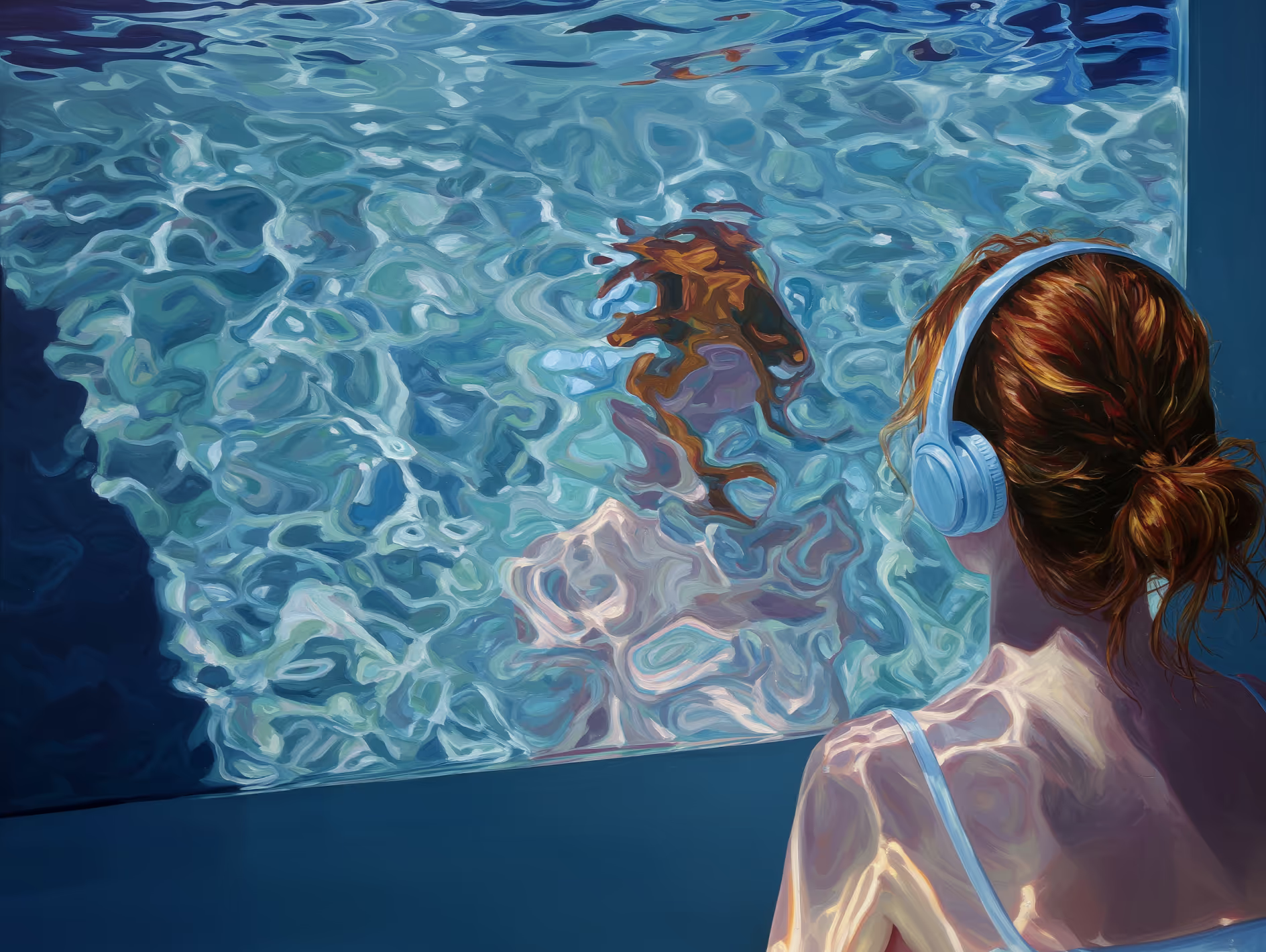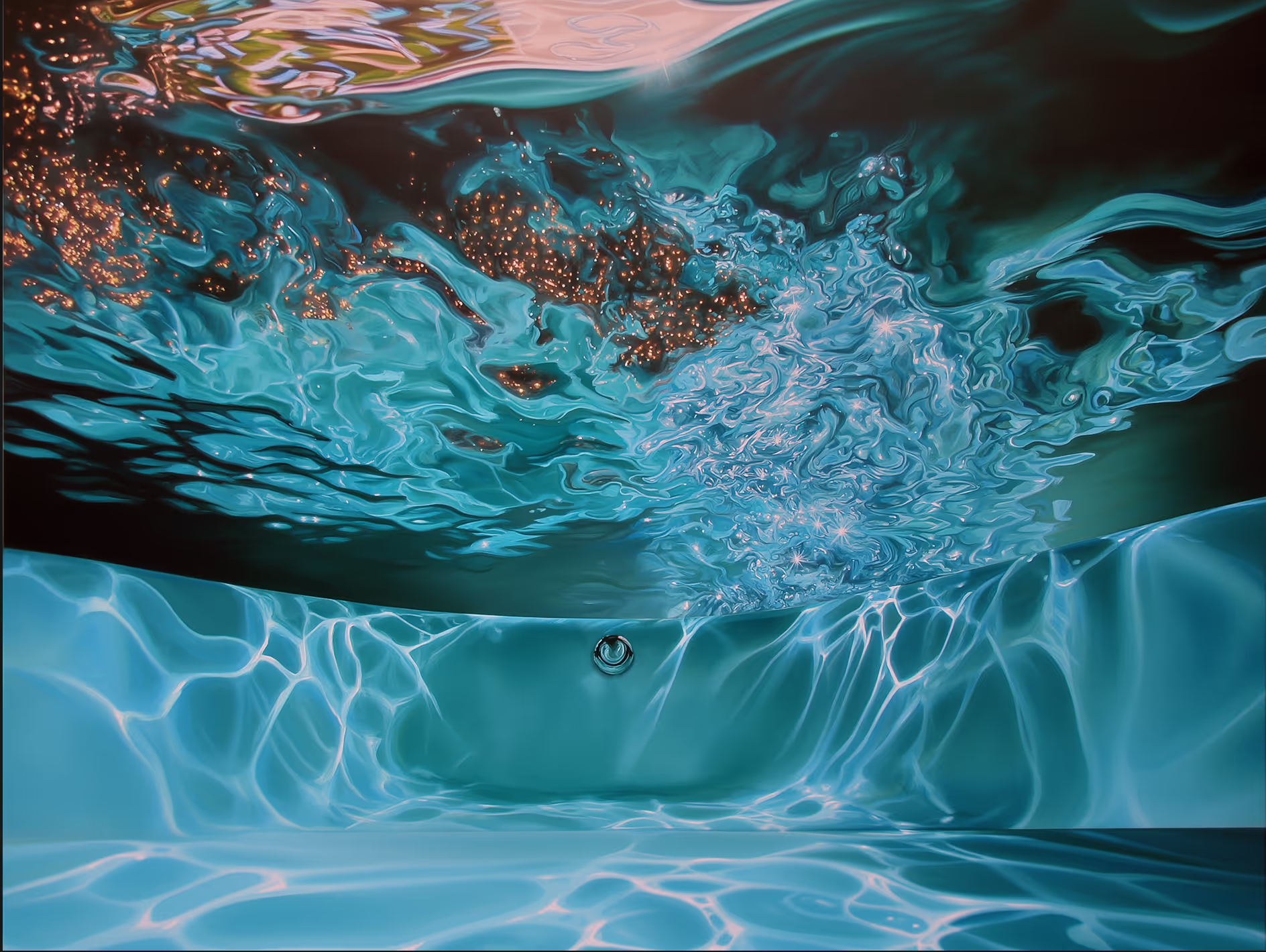
She Sold her Bathwater, but You Drank it

It starts with a bathtub. Pink water, milky with bath bomb residue, glitter orbiting like plankton. Somewhere off-screen, a feminine laugh — the kind of giggle that’s both invitation and dare.
She’s not naked, not really. She’s performing the idea of nakedness.
Ring light halo. Cat ears. Lips parted like a glitching emoji.
And she’s talking to you — yes, you — the guy who swore he “doesn’t simp,” the girl who swore she “doesn’t judge,” the algorithm that always seems to show up when someone’s rinsing off their dignity for views…
A click.
A jar.
A label that reads GamerGirl Bathwater.
You’re disgusted. You’re intrigued. You’re scrolling.
You’re in.
The internet’s oldest hunger: to see, to be seen, to own a piece of someone else’s body without touching them.
And the e-girl? She’s just the latest prophet in a religion built on male gaze and monetized affection — the saint of soft-core capitalism, baptizing you in her bath.
You thought she was selling fantasy. She was selling compliance.
And you bought it.
That moment — when the tub became a storefront, and the “e-girl” became both puppet and peddler — is where our story begins.

Origins of the “E-Girl” & Malicious Compliance as the Internet Economy
Let’s unpack what the term e‑girl and e‑boy subculture meant initially, because it matters.
The words “e-girl” (and “e-boy”) sprang up in the online gaming and forum world of the early 2010s. It was often a pejorative term: a woman in a male-dominated gamer space, perceived to be “seeking attention.” The aesthetic pulled from emo, scene, mall-goth, Japanese street fashion, anime, K-pop, and gamer culture.
The style burst into broader public view with the rise of TikTok around 2018–19: short-form video made “look” into micro-performance, and it started to become currency. The e-girl aesthetic meant visibility, engagement, parasocial attention, and eventually, monetization.
And now let’s introduce the second concept: malicious compliance. In internet culture, this is the art of doing exactly what’s asked but in a way that undercuts or subverts the request. The e-girl economy thrives on this: fans ask for attention, thirst for access, want “authentic” connection, and creators respond by packaging that thirst into a product.
The bathwater? The Twitch hot-tub stream?
That’s malicious compliance with a request no one expected would become literal.
{{dark-side}}
The Monster Gets Legs: From Aesthetic to Monetized Persona
By the early 2020s, e-girls were a business model. Forums, articles, and style guides began explaining what an e-girl is. Platforms like Twitch, Instagram, and TikTok became the stage. The e-girl’s “look” became a brand. As WIRED put it: “girls couldn’t earnestly be gamers, goons maintained. But later, Gen Z reclaimed ‘e-girl’. … Egirl has metastasized.”
This was the shift: from “I dress this way” to “I perform this way — and you pay (maybe with your attention, maybe with cash).” The monetization vector is key: fanbases, merchandise, OnlyFans, affiliate links, all wrapped up in the aesthetics-plus-economy.
Which brings us to the bathtub. Because once attention becomes currency, the body and the boundaries shift.
Bathwater, Hot Tubs, and the Literalization of Thirst
Here are two headline moments.
Belle Delphine: The origin story
In July 2019, she launched “GamerGirl Bath Water” – jars of her bathwater. Reportedly, 600 were sold at approximately $30 each. The tagline: “bath water for all you thirsty gamer boys” – was announced on Instagram.
The move: utterly absurd, utterly viral, and brutally effective. It transformed thirst into a direct product. From summer 2019 website meltdown to meme status: bottles sold out in days.
Sydney Sweeney (2025): The polished next wave
In May 2025, she teamed with Dr. Squatch to launch “Sydney’s Bathwater Bliss” — bars of soap “made with my actual bathwater.” Limited edition: only 5,000 bars. Certification of authenticity included. Price: ~$12 each initially.
She leaned into the weird: “When your fans start asking for your bathwater, you can either ignore it, or turn it into a bar of Dr. Squatch soap.” Backlash, memes, and, yes, thirsty purchases ensued. The audience swallowed the water (metaphorically, literally) and paid.
Important note: it’s not just the jar of water now. It’s packaged, branded, and limited-edition. That’s the evolution of the model.
Twitch hot-tub streams and normalizing the “exposure”
While the bathwater is extreme, the broader trend is: e-girl streaming culture has normalised using body, bedroom, sexual suggestion + gamer audience as the template. Hot-tub streams on Twitch, cleavage, and game controllers, etc.
This is part of the same arc: the body becomes the platform, the boundary collapses, and the audience buys access via likes, follows, subs, and merch.
Why Did this Happen? Context and Underlying Mechanisms
Nothing happens in a vacuum, least of all this bathwater alchemy.
Algorithmic attention economy
- Platforms reward engagement. The more shocking or borderline you are, the more you get seen.
- The e-girl aesthetic fuels endless scroll loops: transformation, makeup, and reveal. The performance formula = views.
- Thirst = attention = currency.
Parasocial collapse and DIY celebrity
- Fans feel intimate access. E-girls heart-like, respond to comments, drop selfies in corners of bedrooms.
- Boundaries blur: fan wants “closer.” The creator offers “bathwater.” The fan buys in.
- The identity of creator = product.
Subculture → mainstream → commerce
- What started in Tumblr forums and anime gaming rooms became TikTok filter aesthetics, which in turn became fashion lines.
- Once mainstreamed, the oddity becomes a marketing strategy: bathwater sells because the absurdity sells.
Malicious compliance and self-commodification
- The creator says, “You want my bathwater? Fine. Here it is.”
- This compliance is malicious because it subverts the fan’s fantasy, and yet sells it back to them. The creator is complicit, but in control.
- It’s the ultimate statement in “authentic” performance art plus commerce: “I will give you what you ask, but on my terms.”

The Normalization Over time: What was Fringe is Now Business as Usual
So how did the e-girl model become a template?
- Fashion brands co-opting the look: high-street retailers and luxury houses angle into the split-dye trend, nod to anime, and incorporate mesh shirts and platforms.
- Influencers and creators adopting the e-girl aesthetic as part of their personal brand — and monetizing it via livestreams, shout-outs, and affiliate links.
- Platforms normalising “thirst” as part of engagement: “send me a tip,” “jump into the pool,” “make silly faces.” The boundary between “real self” and “performance self” is erased.
This shift means that what was once fringe shock now becomes expected. In 2025, we don’t blink when a creator says: “Here’s the limited merch with my bathwater” or “Join me in the hot tub stream for exclusive chat.”
That’s just another Tuesday.
Implications: Cultural, Psychological, Commercial
So how exactly is this scarring us all? Great question.
For identity and agency
On one hand, creators own the mechanics of their persona. They’re performing, yes, but they are also designing the performance. This can be powerful. On the other hand, bodies and thresholds are commodified. Getting paid for your bathwater underscores how intimate the economy has become.
Hence, the line between authentic self and performer self collapses. What does “me” mean when “me” is sold?
For culture and attention
The crazy becomes normalized. Bathwater? Hot tub streams? Those are the cheap thrills; now we might see VR immersive fan experiences next. The threshold of “shock” for engagement escalates. What will be next to cut through the feed?
Gender and power dynamics also play a role. Many of these models are female creators in male-dominated spaces. Are they empowering themselves through the attention economy, or being funneled into a new kind of performance trap?
For commerce
Monetization of persona: every reaction, comment, drip of bathwater is a potential product.
And, hey, scarcity sells. The limited drop of 5,000 bars of soap? Marketing craft. The fan is transformed into a consumer; the creator into a product.
Malicious compliance = business model: ask for it, then sell it back.

So What? Why Should we Care?
This is not just trivia about bathwater, but how youth culture, internet economies, and identity performance intersect in a moment we’ll look back on and call “the bathtub phase of creator-economy.”
This is where the boundaries between life and content blur. Where attention becomes product, and product becomes personal. Where the weird is normalized, and the normal becomes weird.
In short, the e-girl and her bathtub are a mirror to the internet’s soul. Make no mistake.
The Tub’s Still Draining
The water’s gone cold, but you’re still watching and still tipping. Still refreshing.
You think it stops at soap bars and swim streams? Please. That was foreplay. The new model is simple: they tell you to sell yourself, and you do — pixel by pixel, pore by pore — until the algorithm moans “yes.”
Bathwater was a proof of concept. The real product is erosion.
Every woman with a ring light is running a micro-economy of want. The human form has been rebranded as interactive content — 4K skin, 1080p desire, monetized on a monthly plan.
The tub isn’t empty. It’s an IV drip.
And if you’re wondering where it goes next? It’s already there.
In VR bathhouses. In AI girlfriends trained on real girls’ voices. On OnlyFans, automation bots that flirt better than humans.
Ask yourself: What’s the next level of “weird compliance?” Because trust me, it’s coming.
*And yes, that’s what she said* 😉



A Brief History of the E-Girl

An e-girl has to be Extremely Online, right?
It’s all in the name, like email or e-cigarette — something tainted, something to be avoided. A term that makes you want to log off and touch grass while wondering if you’d wandered onto the set of a detective procedural, the only place where people say phrases like “smoking the reefer” or “electronic cigarette” in complete sincerity.
But I digress.
A creature like the e-girl could only belong to the modern Internet, wearing her cat ears and eyeliner, and making big eyes at the camera. It’s like she sprang fully formed from a Tumblr post sometime in the early aughts, or was reborn from Tila Tequila’s Myspace Top 8 onto TikTok.
The thing is, she has always been with us.
Insert Dial-up Noises Here

You can argue that the MacPlaymate is an important part of e-girl history: a game like that sets the stage for what kind of consumption early home computer adopters were interested in. It’s not that wild a leap from a $50 computer game in 1987 (about $146 in today’s money) to buying a gamer girl’s bathwater today.
The throughline is seeing women as a commodity for consumption. Maxie the MacPlaymate may have been made of pixels, but very real human women realized that if you’re going to be seen the same way, you might as well make a buck off of it. So pose for actual Playboy, or even better, control the whole process by putting yourself online and selling a tangible piece of yourself to your thirsty audience.
They’ll call you names no matter what you do — it’s impossible to perform the perfect amount of slutty that makes you desirable but still leaves you “unspoiled” in the eyes of a particular kind of audience — so why not cash in on the whole situation?
What has the audience done except first make e-girls, and then punish them for it by using it as a pejorative term?
The E-Girls of Yore
Long before the sound of dial-up internet connections haunted homes around the world, women had to walk the line between desirability and purity. Security in life meant a good marriage, and that meant being interesting enough to draw attention while passing the test of being goodly enough to be a wife and a mother.
The virgin-whole dichotomy; the impossible test of womanhood.
Smart women throughout history looked at the concept and thought, “Well, that sucks… but at least I can figure out a way to pay my way with it.” The formula for malicious compliance.
Like an e-girl of today who uses the term as a self-referential joke, these women set up shop in saloons, spinning the alluring fairytale of the hooker with a heart of gold long before Julia Roberts picked up Richard Gere while wearing a questionable blonde wig. (She was wearing the wig, not him.)
They became pampered mistresses with more freedom than a wife, and sometimes more political power.
The e-girl is just the latest model. And I, for one, welcome the future sexy androids selling audiences their lightly used motor oil for thirty imperial credits a bottle.
© 2025 Manychat, Inc.
